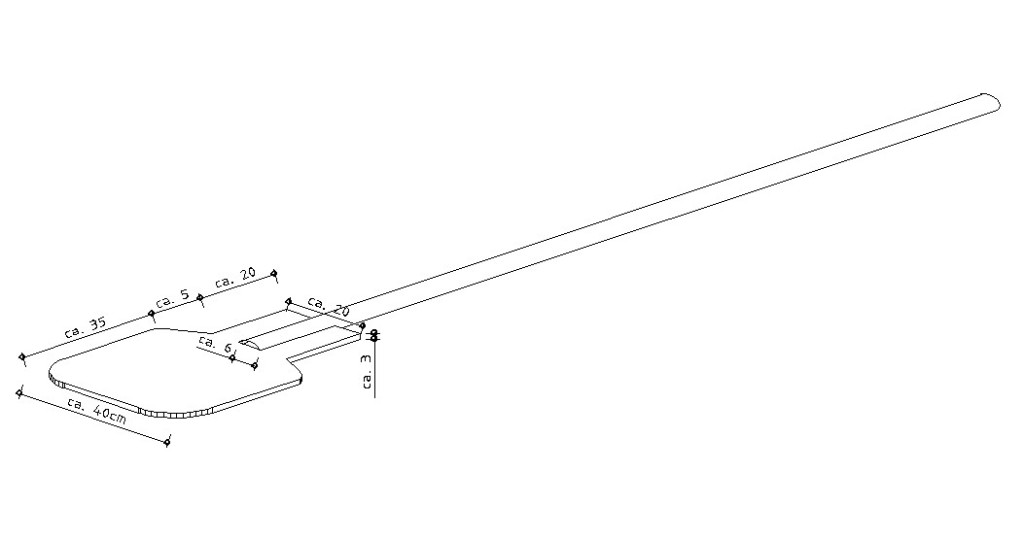Baking the bread
The dough balls are put in the oven in rows using a baker’s peel. They cannot be put right up against one another as the dough will still expand. They must not touch the walls either as they will burn. The bread has to be put in quickly, as the first ones will start baking while the others are put in. Furthermore, the baker has to act quickly to prevent the oven to cool down. A little flour on the baker’s peel stops the dough balls sticking to it.
When the bread is in the oven, the oven door is closed to keep in the heat and also the steam. While baking, some of the water in the dough evaporates. This vapour “settles” on the bread as the oven cools, giving the bread a soft crust.
The baking time depends on the weight of the bread and the type of grain used:
- white bread: around one hour
- rye bread, wholemeal bread: 1.5 to 2 hours
- flan: around a quarter of an hour (= the last quarter hour before the bread is ready)

Jan Van Vliet, de bakker, 1635.
scan from BOBER H.: plaat 16.
When the bread is taken out of the oven, you have to check that it is properly baked. For example, bread right in front of the oven door is sometimes not baked properly. You can check by sticking a knitting needle into the bread: if it comes out dry the dough has been baked, if a little dough sticks to it the bread has to bake for longer. Another way is to tap your finger on the underside of the bread: if it makes a hollow sound it is properly baked.
The bread is taken from the oven with a baker’s peel and the ash on the underside is brushed off with a wing. The loaves are placed on a breadboard or in a cupboard in a dry place.
The shelf life depends on the crust. Uncut bread with a crispy crust can be kept for around a week.

making a baker’s peel
A baker’s peel is essential for sliding the dough balls into the oven. You may find a wooden or iron one in an attic or jumble sale. You can also make one yourself. The drawing below is clear. The shape of the blade is not important: there are rectangular and round ones. The handle must be long enough.
It is best to cut bread just before you eat it.
A bread knife was generally used to cut the bread. The bread was held upright against the chest and cut towards the body.
The amount of bread baked in one baking session depended on the size of the oven. It was also determined by needs, for example the size of the family and whether neighbours baked their bread together. The shelf life also affected the amount of bread baked. In Belgium, baking was generally done weekly in small quantities, but in Bourgogne (France) for example, it was only done monthly.

photo KADOC, Leuven





